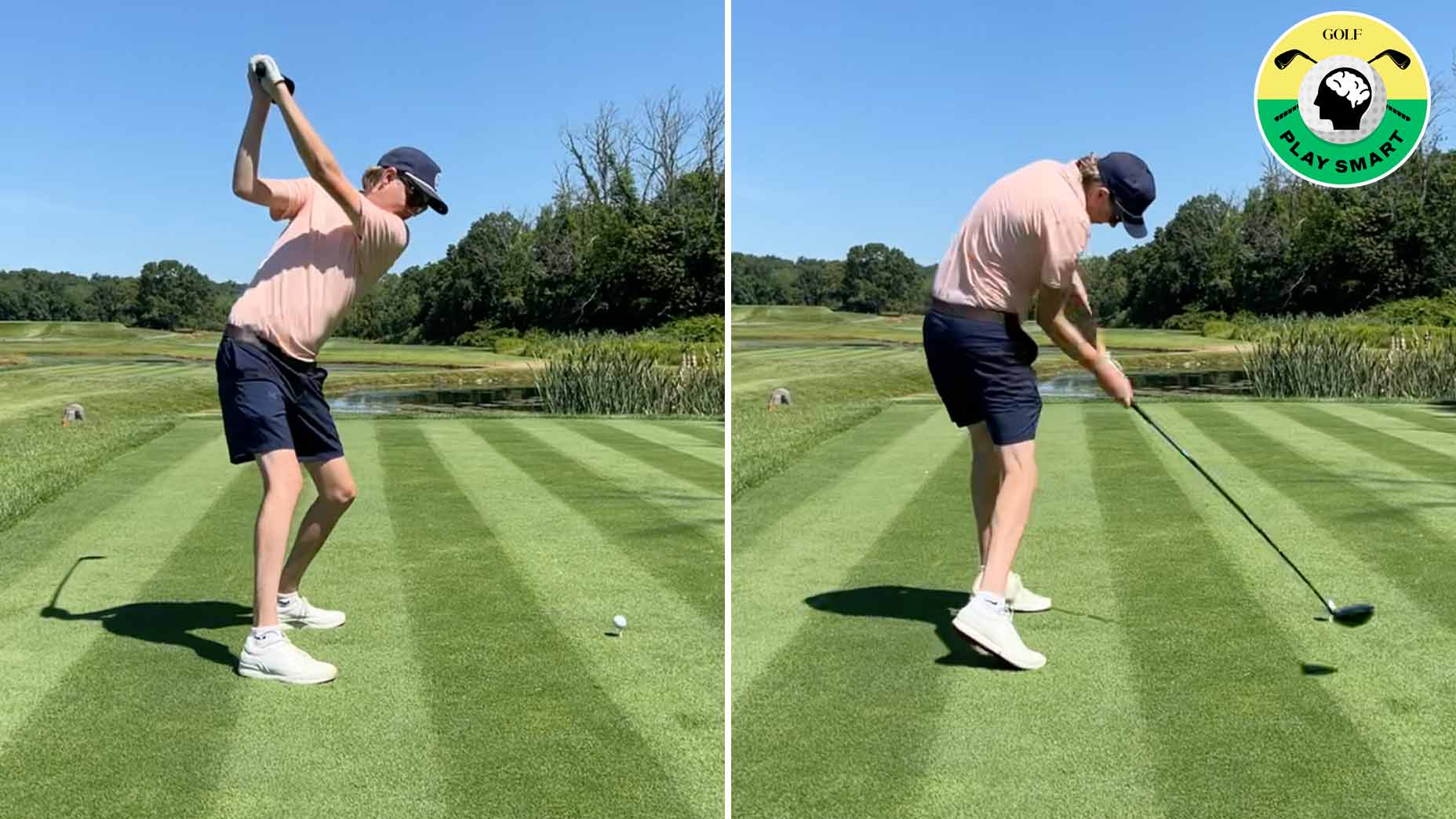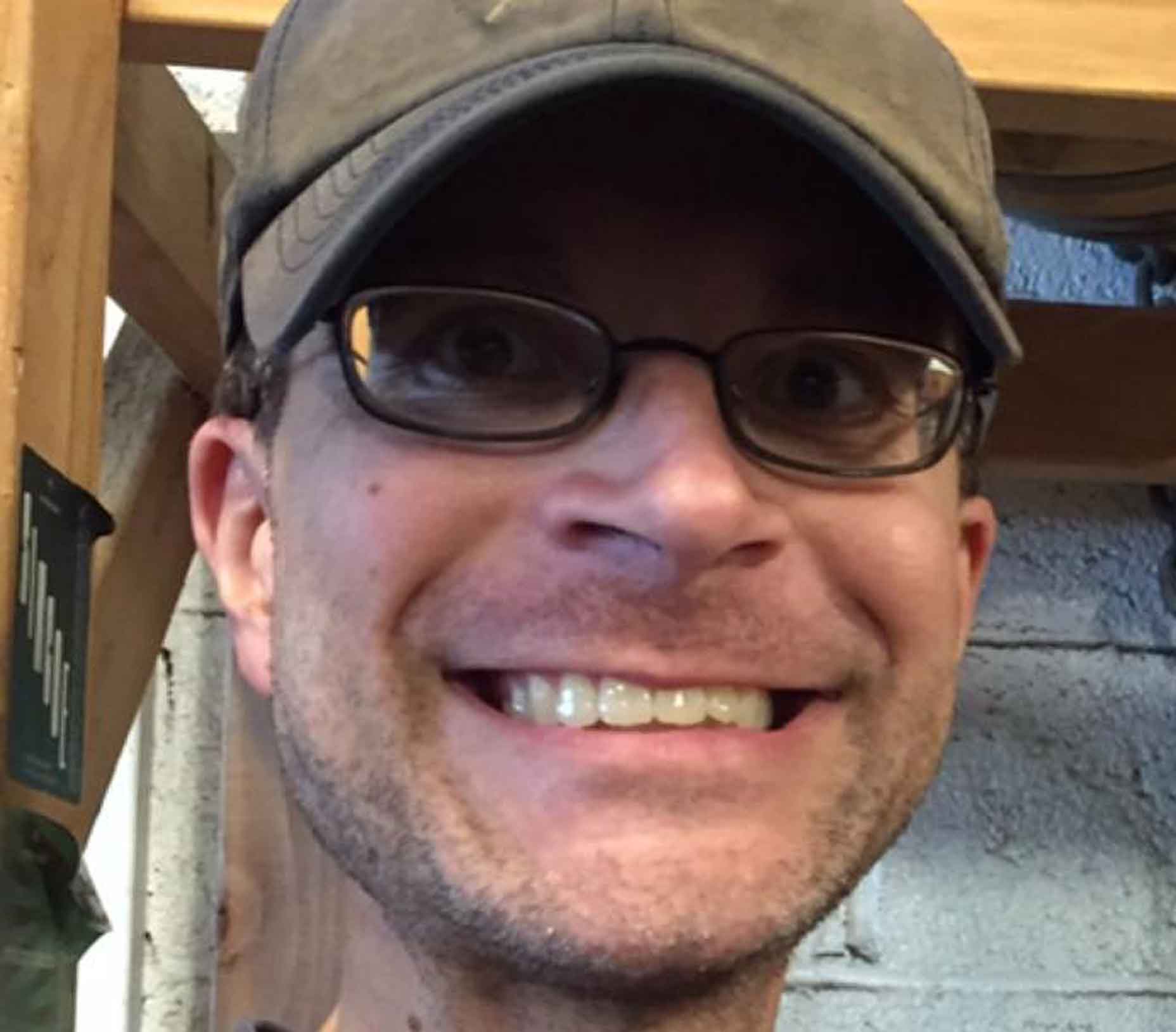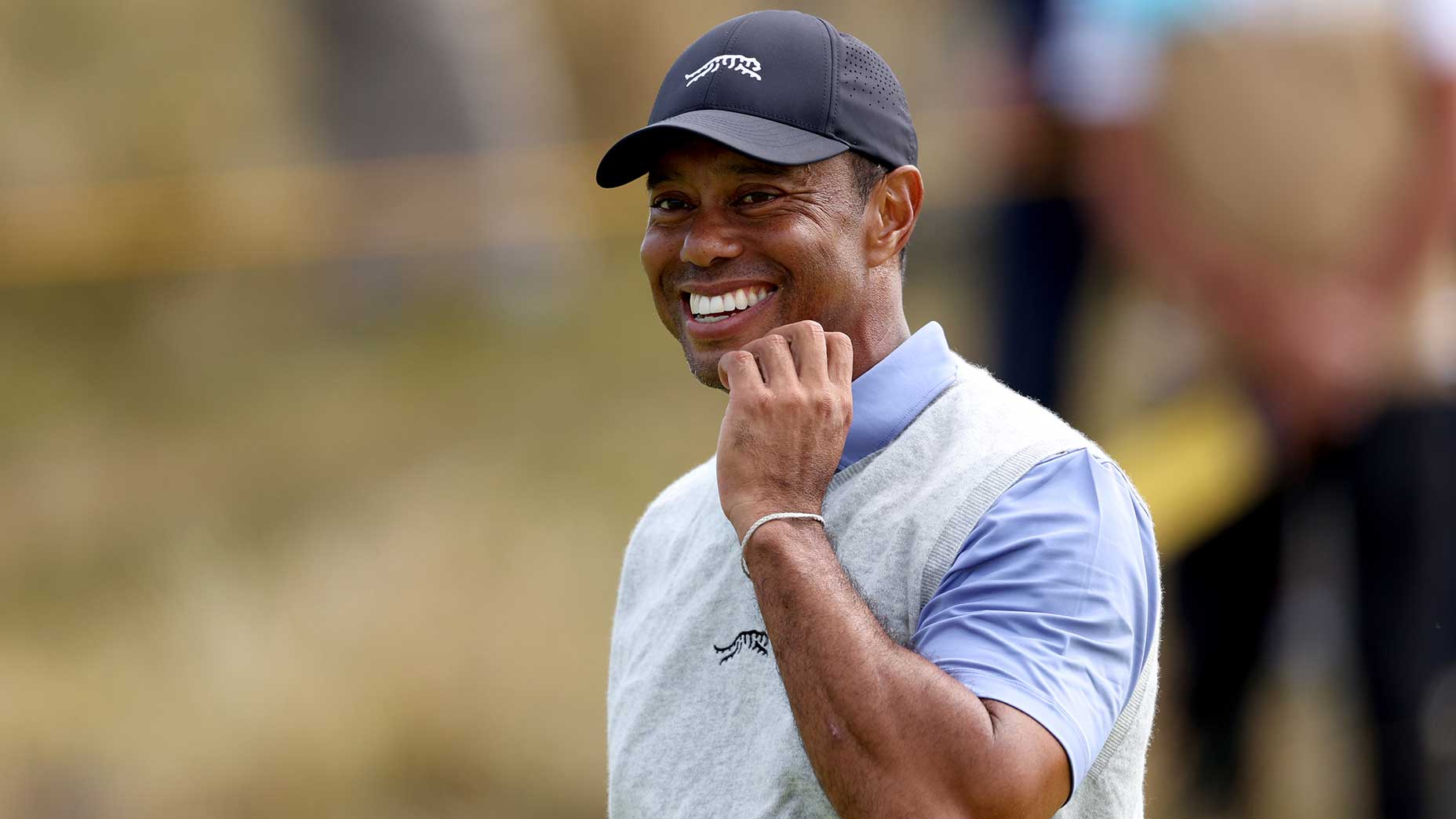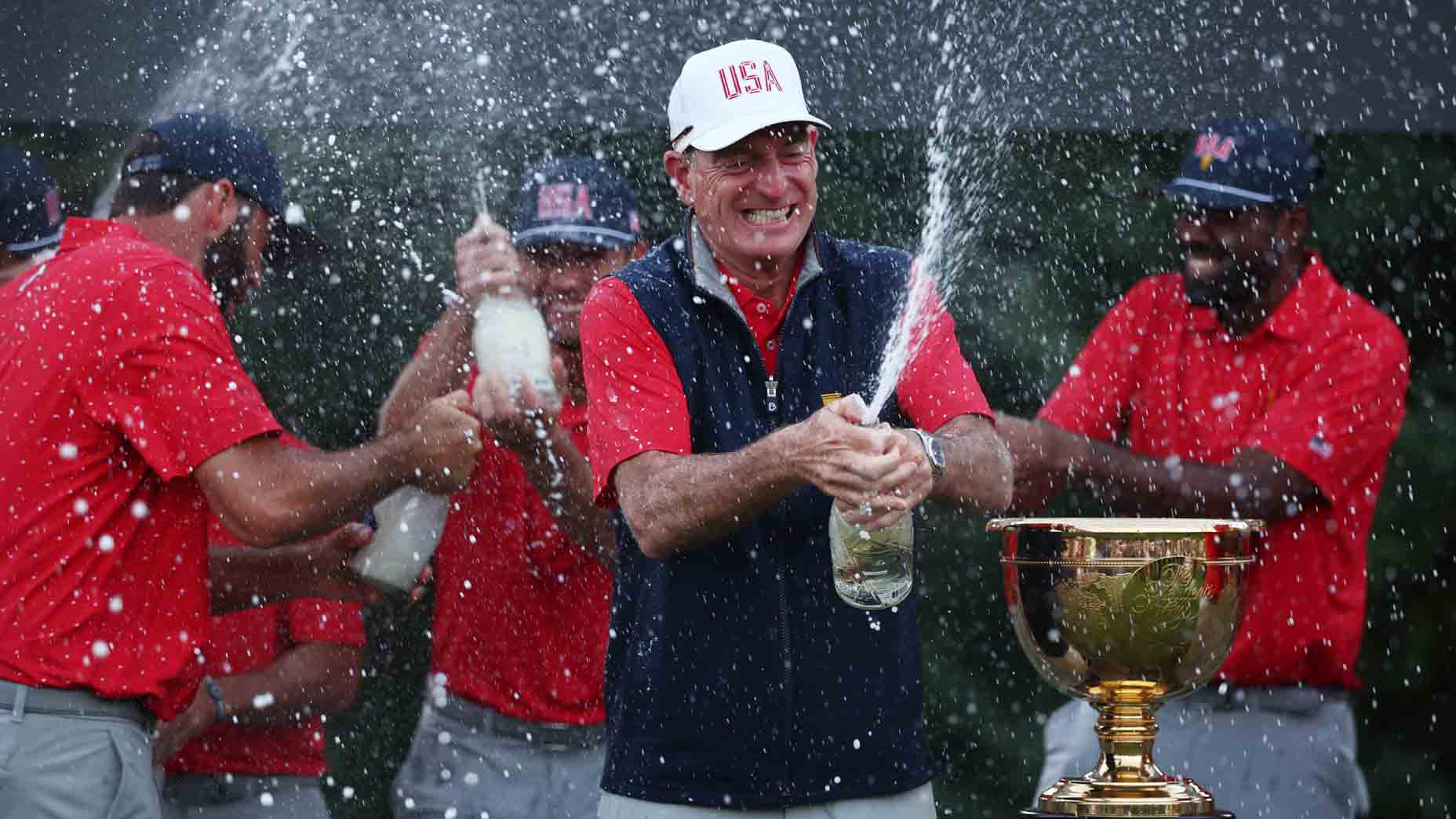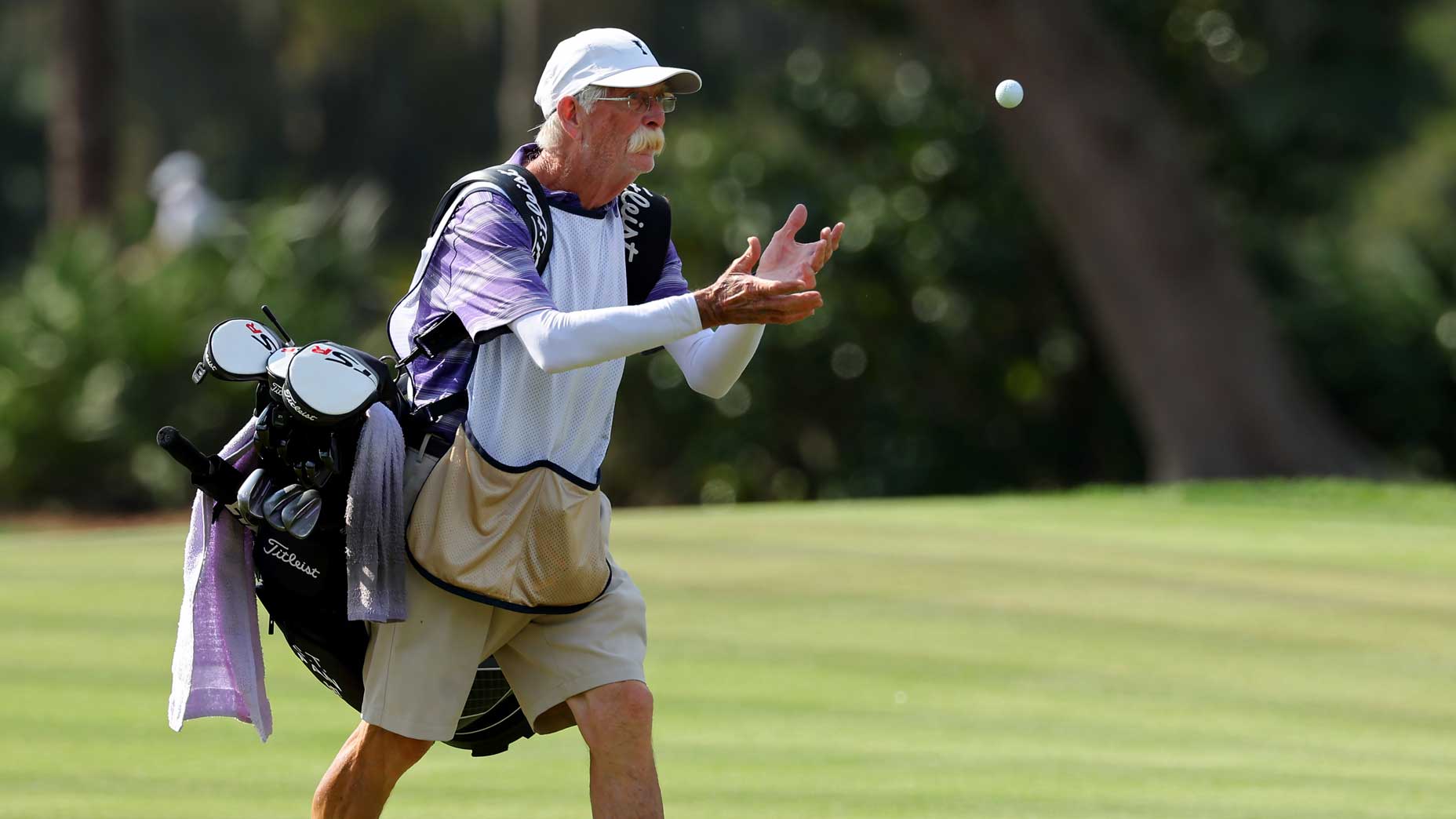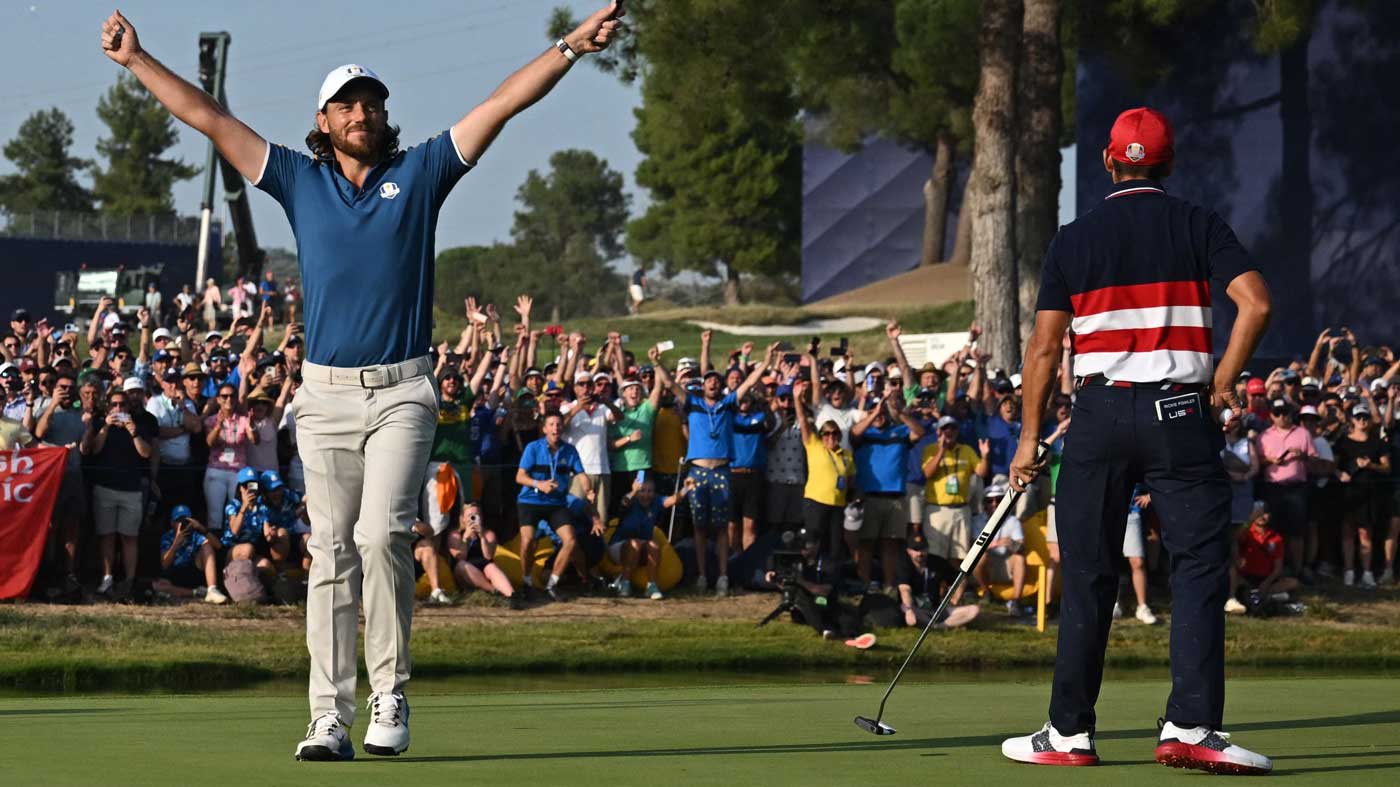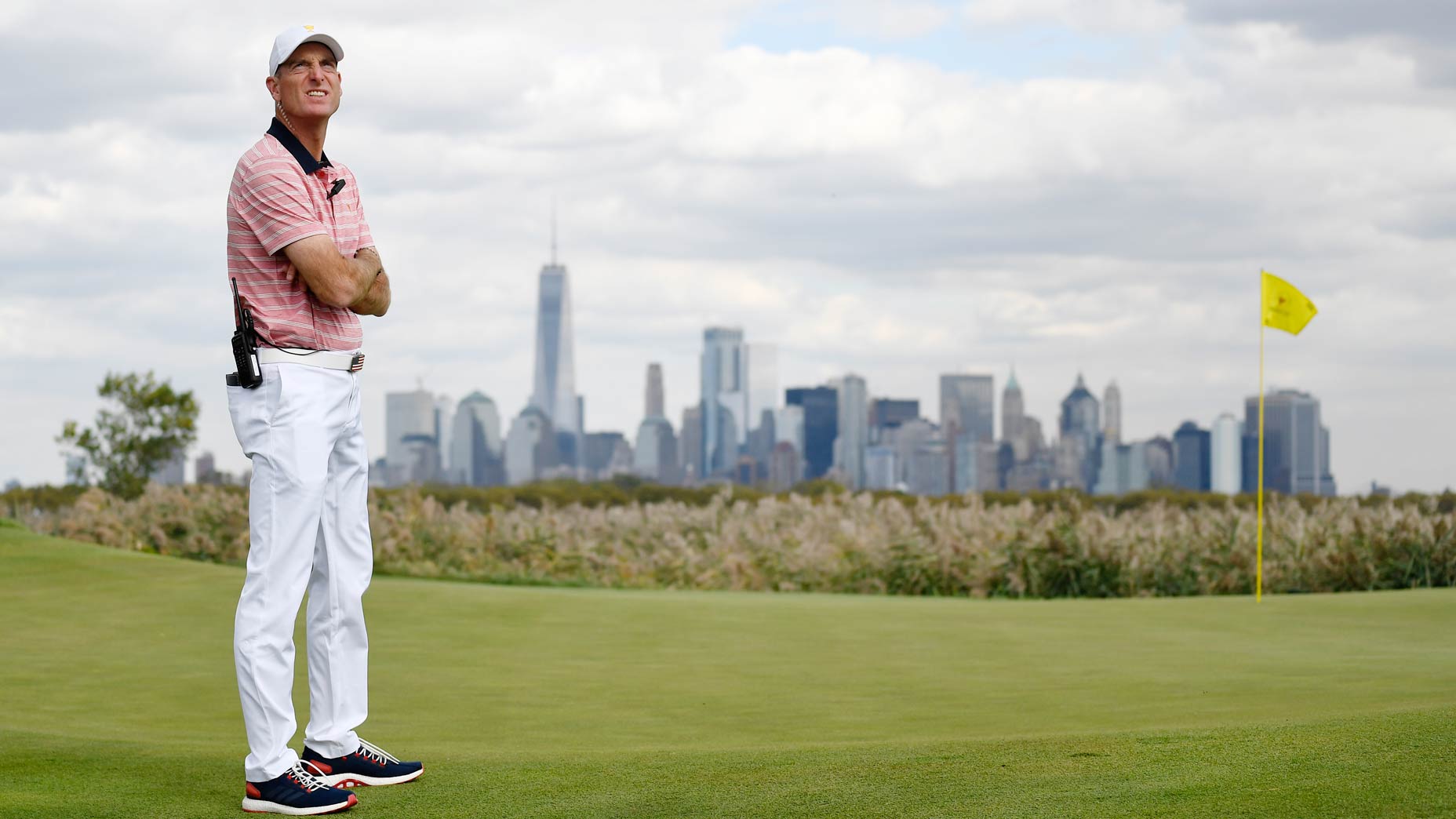Rake a ball in. Fire.
Rake a ball in. Fire.
Again and again.
Jim Furyk says he knows the common range routine well. But he also says he was guilty of it. He says you don’t play like that during rounds. He knows what he was forgetting.
The set-up. His pre-shot routine.
“I don’t think enough people practice that part of the game on the driving range,” he said..
The 2003 U.S. Open winner was talking on a recent episode of The Exponential Athlete Sports Performance podcast — which you can watch in full here — and he’d been asked by host Ken Jee specifically about set-up. What followed was a six-minute conversation, and there are a few takeaways.
Eventually, Furyk said he moved away from rake-and-fire, though by accident.
He’d hurt his wrist. Doc put him on a 25-ball limit.
“I had to start practicing a little bit different,” Furyk said on the podcast. “I had to be more efficient. I had to go kind of more quality over quantity. And I realized I was taxing my body a lot less and I actually became a lot better ball-striker at that point because I learned how to practice well and I learned how to be efficient, and I learned to really practice that pre-shot routine. …
“I ground over those 25 shots like I was already in the U.S. Open. Like I was working hard. And with that, I really worked hard on my pre-shot routine. I really worked hard on my set-up. Exactly how I was getting to the ball.”
Pre-shot routines and set-ups, though, don’t have to be laborious. They could be as short as 40 seconds, Furyk said on the podcast. “It doesn’t have to take a minute and a half like some guys you watch on TV.”.
He then dove into his. The detail is notable.
— “I started from probably 8 feet behind the ball.”
— “I saw the shot I wanted to hit, and for me, I picked out a finishing target.”
Why a finishing target?
“It’s really imperative for me — I’m not a guy — like a starting target, if I was on the range and I said, all right, I’m going to start at that tree and turn it, my brain doesn’t work that way. I need to know exactly where I want the ball to finish. Doesn’t always have to be right of the pin, it doesn’t have to be the center of the fairway. I might be trying to hit the side of the fairway, I might be trying to hit the center of the green when the pin is right just because that’s the correct shot. But I need to have a finished target. So I really needed to focus on that’s where I want the ball to land. I’ve already processed what the wind’s doing and how I’m going to get it there so now I’m seeing the shot and I’m like, all right, in order to get the ball to land there, the shot I’m trying to hit, the ball’s got to start in this area and I’m immediately going back to my finished target.”
— “And then I walk into the ball. I’ve got the shot that I want to hit in mind; I’m committed to that shot at this point.”
— “Then it’s just a matter of how I’m going to set up. And I would walk to the ball. As everyone knows, I stand very close to it, so I kind of measured a little bit — left hand would almost be touching my left thigh and my feet would be dead together, ball would be basically adjacent to my left toes. And from there, I would take my steps. So I would usually go left foot first, right foot second, kind of get square.”
Would he tweak? Absolutely. But to a degree.
My golf game is broken. Here’s my 4-part plan for fixing itBy: Zephyr Melton
Furyk said he had a thought for his thoughts.
Just one.
“When you get under pressure, when you get nervous,” he said on the podcast, “it’s amazing how quickly you can forget that one thing. You get so locked into trying to hit a good shot, you forget about the process of doing it. So there’s always one set-up key that I’d allow myself to think about. It might be ball position, it might be posture, it might be grip, it might be something that I was really hyper-focused on every week.”
The limit also applied to his swing thoughts.
Just one.
“Kind of for me, it’d be a little bit of a, not necessarily a deep breath, but a breath to kind of catch myself and think, all right, the one thing you’re thinking about in your golf swing right now is this, and I’d let it fly. And so it was always the same process, the same movement over and over and over again. The swing key and that setup key could always change, but I tried to keep it really simple. I always tried to keep it the one.
“I read a quote by Byron Nelson when I was younger that, if he had one swing thought, he felt like he had a great chance to win. If he had two swing thoughts, he had a chance to maybe play well. He said if he had three swing thoughts, he probably didn’t have much chance. So I tried to keep it simple.”
Editor’s note: To watch the entire podcast with Furyk, please click here.

